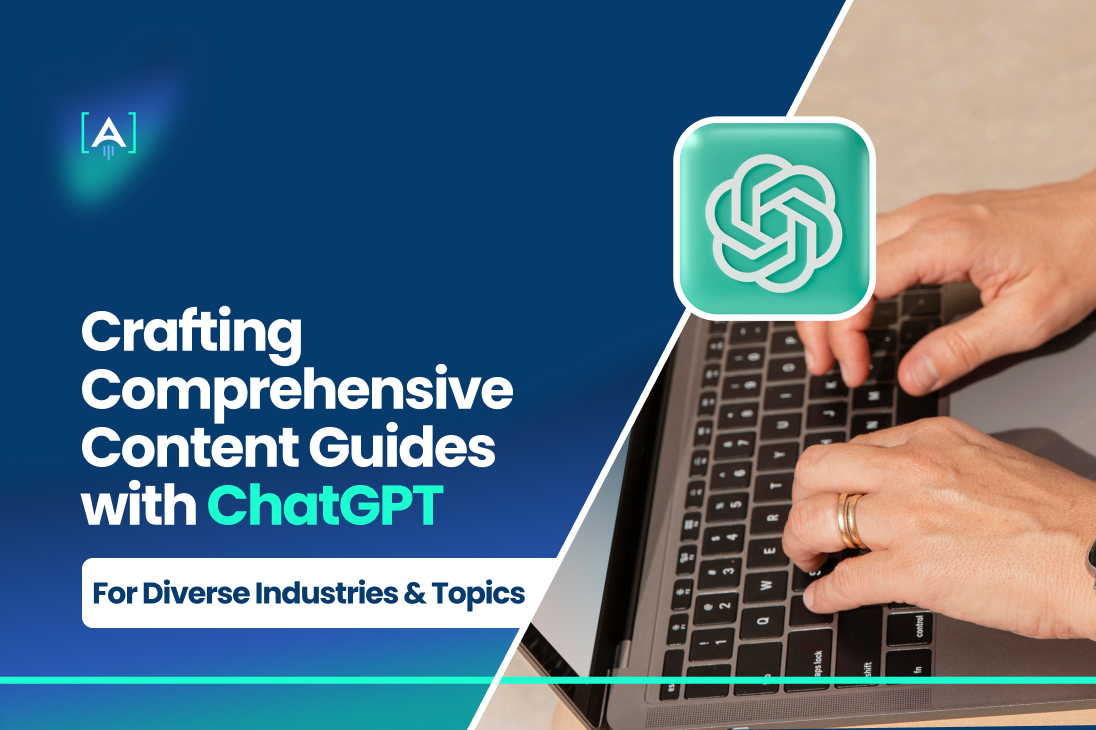Every content creator and content marketing specialist knows each industry has unique needs, and a one-size-fits-all approach simply doesn’t work.
That’s why at [A] Growth, we create a content marketing guide for each of our partners.
Our writers follow specific “rules” – writing style, tone & voice tailored to each brand, maintaining consistency and quality in every piece of content.
Our content guides help define the brand’s voice, understand the target audience, and facilitate the content creation process.
We’ll share how we create a comprehensive content marketing guide for different industries with the help of a GPT transformer.
What is a Content Guide?
A content guide is a set of rules for creating content that matches a brand’s identity.
We create them to ensure that every piece of content, whether a blog, social media update, or web copy, has the same tone and style.
This content ideation process helps maintain consistency across our brand and ensures that our audience receives a cohesive and engaging experience.
We also ensure it follows the pillar and spoke strategy.
A good content marketing guide includes:
- Brand Values: These are the core principles of the brand. They guide the tone, messaging, and brand personality, ensuring they connect with the audience.
- Content Style: This is the overall way you write, reflecting the brand’s personality. It covers the words you use, how formal you are, and how sentences are structured.
- Style Guide: These are the technical details like grammar, punctuation, and formatting. It ensures everything looks and sounds professional.
Using a content marketing guide, writers can create consistent, cohesive content that clearly communicates the brand’s message.
Creating Content Guide Step-by-Step
To illustrate, let’s look at an example of how we used GPT to create a content style guide for a FinTech company.
FinTec, or financial technology, is one of the many industries we work with.
Step 1: General Overview of Industry
We started by asking GPT for a general overview of the FinTech industry.
This initial step helps us gather essential information and set the foundation for a detailed and industry-specific content marketing guide.
GPT provided insights into FinTech key areas, industry drivers, challenges, etc.
Step 2: Training with Data
Next, we provide a report to train GPT on the specific industry data.
First, we gather relevant industry reports to ensure GPT is well-informed.
This report provides an industry overview from IBISWorld, including key metrics, trends, and challenges. We input the report into GPT, enabling it to learn and understand the industry specifics.
Then, GPT processes this information to identify essential details that we will include in the content marketing guide.
Step 3: Identifying Marketing Needs
Once we have a solid understanding of the industry, we focus on the specific marketing needs relevant to FinTech companies.
Based on our research and insights from GPT, we identify key areas such as content marketing, SEO, social media marketing, and more.
This analysis prepares us for the next step: developing detailed customer personas.
Step 4: Creating Customer Personas
The next step in creating a content marketing guide is developing a detailed customer persona.
These characters collectively represent our target audience, embodying their traits, behaviors, and motivations.
This step helps us tailor our content to meet our target audience’s precise needs and preferences. Here’s how we approached this for a FinTech company:
We asked GPT to create a detailed FinTech customer persona. This involves defining various aspects such as demographics, professional background, goals, pain points, and challenges.
Step 5: Creating Brand Voice and Tone Guidelines
The next step in creating a content marketing guide is establishing a cohesive brand voice.
Every partner has a brand personality – how it communicates with its audience, so, we ask ChatGPT to define it for us.
Step 6: Creating a Glossary
The final step is to create a FinTech-related glossary so that our writers use those specific terms in the partner’s blogs, articles, and social media posts.
After all these steps, you can optimize your content using Surfer SEO to improve your search engine rankings.
Create Your Content Guide Today
Now you know how we create content guides for our partners.
See also how we create engaging videos in minutes using Heygen ai.
A well-defined content guide gets everyone involved in content creation to stay on the same page.
Remember, a good content guide is an invaluable tool for any marketing strategy, helping you connect with your audience and achieve your brand’s objectives.
So, invest time and create content guides by following these steps.

